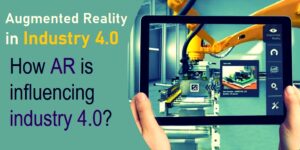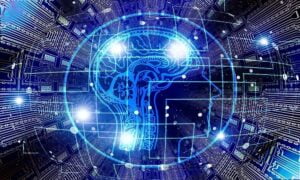Virtual reality (VR) is rapidly being used in many areas of our life and will have a strong impact on several industries in the future. Let’s take a look at the applications of virtual reality in various fields.

What are the Key Applications of Virtual Reality (VR)?
There are many uses of virtual reality technology in the present era and will have a profound impact on various fields in the future. Let’s see the key applications of VR technology.
What is Virtual Reality?
Virtual reality (VR) is the use of computer technology to create an interactive artificial three-dimensional environment, which simulates the behavior of the entity.
Virtual reality (VR) is a brand-new practical technology developed in the 20th century. VR technology mainly includes aspects such as simulated environment, perception, natural skills, and sensing equipment. The basic realization principle is that the computer simulates the virtual environment to give people a sense of environmental immersion.
With the continuous development of social productivity and science and technology, there is an increasing demand for VR technology in all walks of life. VR technology has also made great progress and has gradually become a new field of science and technology.
VR involves many disciplines, a wide range of application fields, and various types of systems, which are determined by its research projects, research goals, and application requirements.
Some scholars have made statistics on 805 VR research projects that have been carried out all over the world, and the results show that: the current applications in entertainment, education and art occupy the mainstream, reaching 21.4%, followed by military and aviation with 12.7%, medicine accounted for 6.13%, robotics 6.21%, and business 4.96%. In addition, it also has a considerable proportion in visual computing and manufacturing.
Applications of Virtual Reality (VR)
Virtual reality (VR) is rapidly being used in our everyday life and will have a strong impact on several industries in the future. Following are the major application areas of VR technology.
Virtual Reality in Medicine
The application of Virtual reality in medicine has very important practical significance. In a virtual environment, a virtual human body model can be established.
With the help of trackballs, head-mounted display (HMD), and sensory gloves, students can easily understand the structure of various internal organs in the human body in medical teaching, which is more effective than the existing textbook method.
VR technology is not only affecting medical equipment but also affecting the development of the entire medical industry.
At present, VR medical applications are mainly divided into several aspects:
First, VR technology can be used for various mental illnesses or rehabilitation training.
Through VR technology, various scenes that may not exist in reality can be virtualized, which can help psychology students to complete various health items.
Secondly, the visual immersion and interactivity brought by VR technology can allow doctors to “enter” human body observation and learning, simulating human anatomy and other activities. With the help of VR technology, doctors can learn in virtual scenes.
Secondly, the visual immersion and interactivity brought by VR technology can allow doctors to “enter” human body observation and learning, simulating human anatomy and other activities. With the help of VR technology, doctors can learn in virtual scenes.
In addition, VR technology is of great significance in the aspects of remote surgery, planning and arrangement of complex surgery, the guidance of the surgical procedures, prediction of surgical consequences and improvement of the living conditions of the disabled, and even the development of new drugs.
Virtual Reality in Education
Virtual reality is used in the field of education and it brings many advantages to students of all ages.
Virtual reality is taking off in education as more and more schools and colleges are adopting this technology.
VR technology allows us to bridge the gap between educators and learners and promote higher education, vocational education and other experimental and demonstrative courses; physics, chemistry, biology, geography, etc.
Through VR technology, the overall college campus environment and infrastructure are displayed in real life, providing students with more intuitive and comprehensive choices when choosing a school.
Virtual reality is already being used in university settings for practical purposes and to generate experience such as designing architectural models or seeing some systems of the human body.
VR technology helps build virtual classrooms, virtual laboratories and other educational and teaching environments, and develop virtual lesson preparation and virtual exams, promote learner-centered personalized learning, and promote the transformation of teaching and learning models.
Virtual Reality in Entertainment
Virtual reality is widely used in the entertainment industry to heighten your experiences with 360 ° videos or movies and increase your emotional connection with them and/or the characters.
Virtual reality environments allow the common people to interact with exhibitions, concerts, exhibits, museums, etc. in ways that were previously unknown or forbidden.
Rich sensory capabilities and a 3D display environment make VR an ideal video game tool.
The current VR technology is more suitable for game development: role-playing, action, adventure puzzle-solving, and racing games.
Its advanced graphics engine is no less than the graphics performance of the current mainstream game engines. Moreover, the integration of supporting dynamics and AI systems facilitate the development of the game.
VR technology has developed most rapidly in entertainment in recent years. For example, Star Trek: Bridge Crew, Fruit Ninja VR, Half-Life: Alyx, Pistol Whip, Farpoint or Batman: Arkham, Beat Saber, The Climb, Superhot, are some best VR games that you can enjoy a lifelike gaming experience at home. In addition, VR also shows good prospects in home entertainment.
Virtual Reality in Military Training
Virtual reality is used in many military fields. VR technology can simulate advanced ground vehicles, mimic any type of vehicle and let soldiers experience their shape and maneuverability.
Simulation training has always been an important topic in the military, allowing soldiers to practice the feeling on the battlefield.
In general, VR training includes the use of head-mounted displays (HMD), VR glasses and data gloves to enable military personnel to interact with objects within a virtual environment.
Virtual reality technology allows military professionals to train in a virtual environment where they can improve their skills and abilities without compromising training on the battlefield.
In the past few decades, VR technology has been used for simulation training, mainly for projects that are very expensive or even dangerous on real systems.
Different types of situations are simulated and in a variety of terrains and scenarios where the recruits live a totally immersive reality with the same efficiency as real training, increasing the frequency of tests as they are much less expensive.
Battlespace Exploitation of Mixed Reality (BEMR Lab) is now exploring more use cases to improve the visualization of the battlefield and strive to better provide information and assistance for every soldier on the battlefield.
Defense Advanced Research Projects Agency (DARPA) has been working on a virtual battlefield system called SIMNET since the 1980s to provide real-time distributed combat simulation: tanks, helicopters and airplanes in a virtual battlefield.
The system can be connected to more than 200 simulators. In addition, the use of VR technology can simulate a zero-gravity environment to replace the current non-standard underwater training method for astronauts.
Virtual Reality in Architecture and Design
Virtual reality has many benefits in architecture and design. VR technology will transport architects and designers into a fully interactive 3D environment and give them the opportunity to explore a virtual representation of a specific room, floor, or building design as a whole.
Taking interior design as an example, using VR technology can not only perfectly express the indoor environment, but also walk freely in a three-dimensional indoor space.
At present, VR technology is commonly used in the industry for indoor 360-degree panoramic display and indoor roaming. It can not only roam indoors but also used as a pre-decoration system.
VR can change the color of the wall in real-time and dynamically or paste the wallpaper of different materials.
You can also change the color of the ground or paste different wooden floors, tiles, etc., and can move the placement of furniture and change different decorations. All this is perfectly performed under VR technology.
Virtual Reality in Urban Planning and Design
VR technology is often used in urban planning and design. Through virtual reality technology, the overall planning layout, development blueprint, city profile, industrial layout, dominant leading industries, “green development” concepts, social governance, etc. of the city are comprehensively implemented.
The use of VR technology can not only visualize the virtual city environment, but also simulate the city under various weather conditions, and understand the drainage system, power supply system, road traffic, ditches, and lakes, etc.
VR technology is used in the intelligent exhibition hall, intelligent electronic picture album, real-time voice commentary, intelligent map, intelligent navigation, and other functions.
VR technology can simulate the emergencies of natural disasters such as hurricanes, fires, floods, and earthquakes.
VR technology has played a pivotal role in the work of the government in urban planning and design.
Immersive virtual reality (IVR) has been intensively investigated as a technique to present proposed urban development in intuitive and interactive ways. It guides urban planners to have a comprehensive and intuitive understanding of the whole city and the process of urbanization and connects with the official government portal website.
Virtual Reality in Traffic Simulation
VR virtual technology has its unique advantages in traffic planning simulation. It can not only use 3D GIS technology to perform various traffic routes in place but also dynamically simulate various natural disasters.
VR technology can be used in traffic simulation to communicate design alternatives to decision-makers and thus to support the decision-making process.
VR technology mainly uses a three-dimensional geographic information system (GIS ) to express intuitive 3D topography and landforms in geographic applications, providing convenience for geographers and providing reliable reference data for related engineering construction.
Virtual Reality in Tourism
The most popular way to use virtual reality in the tourism industry is marketing. The ability to capture tourist destinations in an unforgettable and immersive way is a powerful marketing tool.
Currently, there are a large number of applications to be able to make virtual tours around any part of the world and take advantage of this technology to bring customers closer to destinations and tourism products in addition to enhancing their experience.
Virtual Reality is not intended to replace tourism or physical travel but to function as a compliment that encourages people to travel.
One of the greatest strengths of virtual reality is allowing the user to experience the feeling of “being there”.
Virtual Reality in Museums
Virtual Reality is a resource that is already being used in museums to create museum tours, provide dynamism and interactivity, improve the experience of its visitors, bring scenes to life and attract new ones who see these exhibition spaces as boring, static, and old-fashioned.
Virtual reality has contributed to archeology most decisively in facilitating the dissemination of historical monuments and landscapes.
VR in Museums allows solving some didactic and communication problems. The images produced by virtual reality recreate real or imaginary spaces and landscapes that allow contextualizing the objects of a museum or exhibition and their exhibition discourse.
Conclusion:
Virtual reality technology is very convenient, fast, and true to simulate the above-related work. Virtual reality technology has been recognized by more and more people.
Users can experience the most real feelings in the virtual reality world. The authenticity of its simulated environment is difficult to distinguish from the real world, which makes people feel like they are on the scene.
At the same time, virtual reality has all the perception functions that humans have, such as hearing, vision, touch, taste, smell, and other perception systems; finally, it has a super simulation system, which truly realizes human-computer interaction.
You can operate it and get the most realistic feedback on the environment. VR technology has multi-sensitivity, interactivity, and other characteristics that make it more and more popular.






Pingback: Top 10 Technology Trends You Need to Know for 2022 – SciTech Society